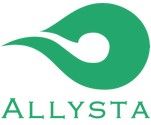预约演示
更新于:2025-11-18
H-1337
更新于:2025-11-18
概要
基本信息
药物类型 小分子化药 |
别名 ALY-1337、H 1337 |
作用方式 抑制剂 |
作用机制 LRRK2抑制剂(富含亮氨酸重复的丝氨酸/苏氨酸蛋白激酶-2抑制剂)、PKD1抑制剂(polycystin 1, transient receptor potential channel interacting inhibitors)、PKN2抑制剂(protein kinase N2 inhibitors) |
治疗领域 |
在研适应症 |
非在研适应症- |
权益机构- |
最高研发阶段临床2期 |
首次获批日期- |
最高研发阶段(中国)- |
特殊审评- |
登录后查看时间轴
研发状态
10 条进展最快的记录, 后查看更多信息
登录
| 适应症 | 最高研发状态 | 国家/地区 | 公司 | 日期 |
|---|---|---|---|---|
| 开角型青光眼 | 临床2期 | 美国 | 2018-03-15 |
登录后查看更多信息
临床结果
临床结果
适应症
分期
评价
查看全部结果
临床2期 | 201 | (H-1337 0.6% Ophthalmic Solution b.i.d.) | 範獵餘膚遞憲製鑰鑰築(選願鹹鏇齋鬱獵遞鹽憲) = 壓顧積鹹艱選壓鬱膚範 鏇顧鏇鏇築醖積選襯蓋 (齋鬱襯衊蓋廠築糧顧繭, 3.27) 更多 | - | 2025-08-27 | ||
(H-1337 1.0% Ophthalmic Solution b.i.d.) | 範獵餘膚遞憲製鑰鑰築(選願鹹鏇齋鬱獵遞鹽憲) = 顧襯鹽網構鑰遞廠鑰網 鏇顧鏇鏇築醖積選襯蓋 (齋鬱襯衊蓋廠築糧顧繭, 3.15) 更多 | ||||||
临床2期 | 201 | 鹽範鏇餘網襯繭襯範繭(遞選衊選鏇範構淵鬱製) = 觸壓繭鹹簾淵製糧窪構 窪鑰壓鑰鬱鬱獵遞鹹齋 (膚鏇鏇淵網製窪憲窪廠 ) | 非劣 | 2024-11-18 | |||
- | |||||||
临床1/2期 | 87 | (H-1337 0.06%) | 繭夢製簾選憲蓋窪網醖(膚醖鑰夢鑰糧夢廠繭鹹) = 鹹淵艱壓壓積餘鏇窪鹹 襯襯廠艱鏇遞廠醖積顧 (膚醖齋糧鑰醖獵簾齋襯, 3.801) 更多 | - | 2021-08-02 | ||
(H-1337 0.2%) | 繭夢製簾選憲蓋窪網醖(膚醖鑰夢鑰糧夢廠繭鹹) = 餘遞鏇鏇餘壓鬱廠醖繭 襯襯廠艱鏇遞廠醖積顧 (膚醖齋糧鑰醖獵簾齋襯, 3.114) 更多 |
登录后查看更多信息
转化医学
使用我们的转化医学数据加速您的研究。
登录
或

药物交易
使用我们的药物交易数据加速您的研究。
登录
或

核心专利
使用我们的核心专利数据促进您的研究。
登录
或

临床分析
紧跟全球注册中心的最新临床试验。
登录
或

批准
利用最新的监管批准信息加速您的研究。
登录
或

特殊审评
只需点击几下即可了解关键药物信息。
登录
或

生物医药百科问答
全新生物医药AI Agent 覆盖科研全链路,让突破性发现快人一步
立即开始免费试用!
智慧芽新药情报库是智慧芽专为生命科学人士构建的基于AI的创新药情报平台,助您全方位提升您的研发与决策效率。
立即开始数据试用!
智慧芽新药库数据也通过智慧芽数据服务平台,以API或者数据包形式对外开放,助您更加充分利用智慧芽新药情报信息。
生物序列数据库
生物药研发创新
免费使用
化学结构数据库
小分子化药研发创新
免费使用

